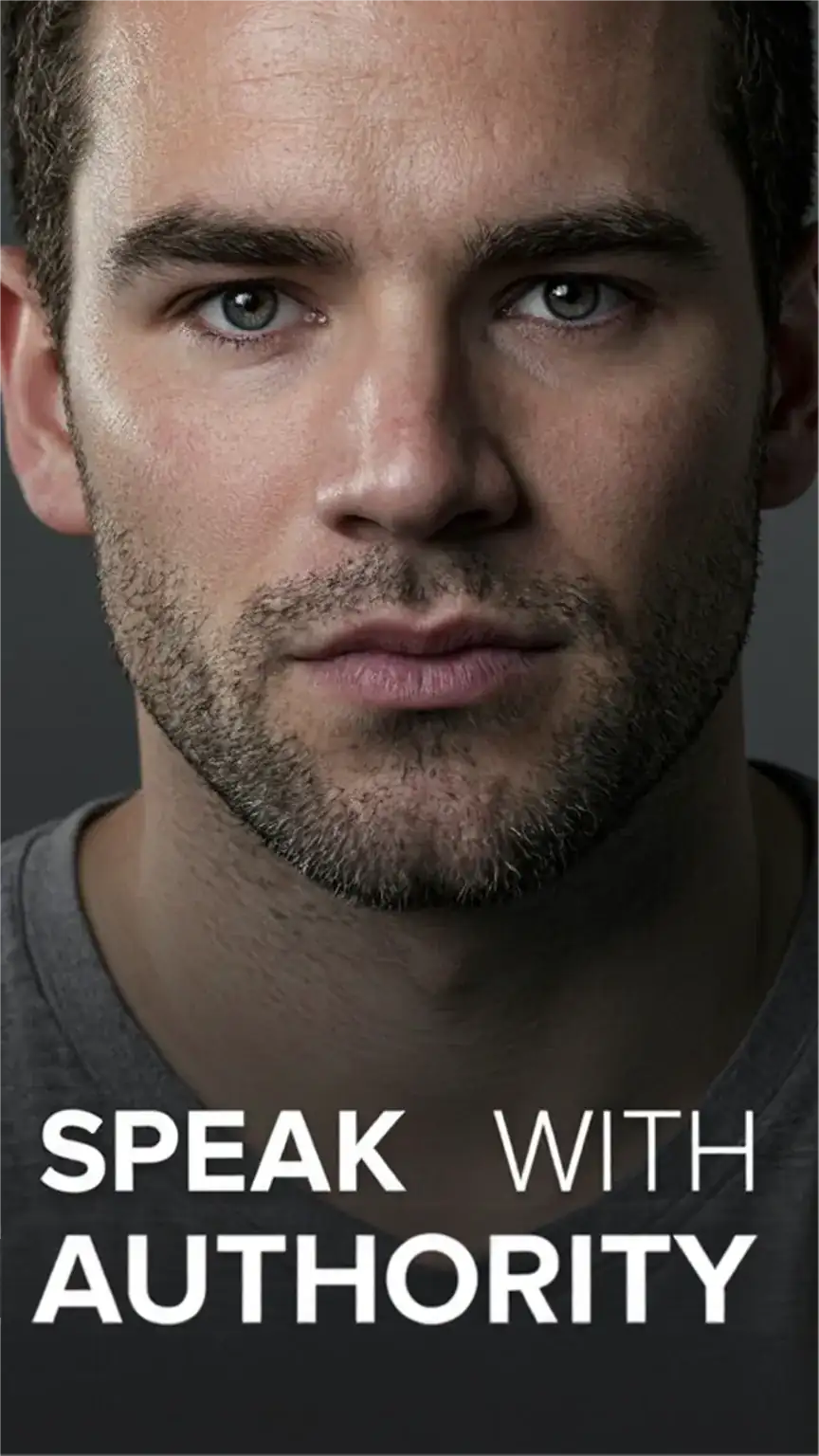As a guy who’s been there, I can attest that building executive presence is a game-changer in both personal and professional settings. It’s not just about dressing up or pretending to be someone you’re not – it’s about becoming the best version of yourself. Imagine walking into a room where your confidence precedes you, where people naturally gravitate towards your insights, and where your opinions carry weight. That’s the power of executive presence.
Many men, myself included, often feel like they’re winging it in the professional arena. We might be brilliant at our jobs, but conveying that brilliance in a way that commands respect can feel like an uphill battle. You might be a fantastic engineer or a shrewd negotiator, but if you can’t project that competence, you’re leaving opportunities on the table. This isn’t about vanity; it’s about strategic self-presentation.
Ladies, bookmark this for the man in your life who ‘has nothing to wear’ to your anniversary dinner, or perhaps the one who struggles to command a room in a meeting. Understanding executive presence isn’t just for the C-suite; it’s for any man looking to elevate his game. After all, 90% of recruiters judge your credibility by your profile pic—here’s how to ace it. Let’s dive into how you can cultivate this essential quality.
Step 1: Know Thyself – The Foundation of Confidence
Before you can radiate confidence, you need to understand your strengths, weaknesses, and values. Take time to reflect on your goals, passions, and what drives you. This self-awareness will help you communicate your vision and connect with others on a deeper level. Seriously, this is where the magic begins.

Think of it like this: you wouldn’t try to build a skyscraper without a solid blueprint. Similarly, you can’t effectively build executive presence without understanding your own internal architecture. What are your core beliefs? What genuinely excites you about your work? Conversely, what are your blind spots? Identifying these areas allows you to lean into your strengths and proactively address your weaknesses.
For example, take it from Dave, a 45-year-old accountant who, after a candid self-assessment, realized his strength lay in meticulous financial analysis but his weakness was public speaking. He then invested in a public speaking course, transforming his ability to present complex data. Consequently, he became the go-to guy for client presentations, significantly boosting his career trajectory. Your future self will thank you for reading this.
Step 2: Dress for Success – Your Visual First Impression
Your attire is a reflection of your character, so dress accordingly. Invest in quality, comfortable clothing that makes you feel confident and put-together. A well-tailored suit, crisp dress shirt, and polished shoes can work wonders for your executive presence. Don’t forget to accessorize with a quality watch, simple jewelry, and a classic briefcase or tote bag.

Because let’s face it—your ‘casual Friday’ tee shouldn’t double as a pajama top. When you look good, you feel good, and that confidence translates directly into how others perceive you. This isn’t about chasing trends; it’s about investing in timeless pieces that fit well and communicate professionalism. A well-fitting blazer, for instance, instantly elevates any outfit.
Pro Tip: Ensure your clothes are clean, pressed, and free of any wear and tear. Little details matter immensely. A polished shoe, a perfectly knotted tie, or a clean watch face all signal attention to detail. Ladies, if your man needs a wardrobe refresh, this is the perfect place to start.
Step 3: Body Language Matters – The Silent Communicator
Your body language speaks volumes about your confidence and authority. Practice good posture, make eye contact, and use open and approachable gestures. Keep your hands out of your pockets, and avoid fidgeting or crossing your arms, which can give the impression you’re hiding something. These non-verbal cues are powerful.

Consider the impact of a firm handshake. It’s a universal greeting that can establish immediate rapport or, conversely, signal uncertainty. Similarly, maintaining steady eye contact shows you’re engaged and confident, while looking away too much can suggest evasiveness. Open posture, with shoulders back and chest slightly forward, conveys approachability and self-assurance.
Conversely, slouching or constantly checking your phone in a meeting screams disinterest and a lack of respect. These are habits many of us fall into without realizing the message they send. Therefore, becoming mindful of your physical presence is crucial. Try practicing in front of a mirror or recording yourself to identify areas for improvement. This conscious effort will refine your executive presence significantly.
Step 4: Speak with Authority – The Power of Your Voice
Your tone, pace, and volume can make or break your executive presence. Practice speaking clearly, confidently, and with conviction. Avoid filler words, like ‘um’ or ‘ah,’ and pause before responding to buy yourself time to gather your thoughts. Your voice is a powerful tool.

Many professionals struggle with the “ums” and “ahs” that pepper their speech. These vocal tics can undermine your credibility, making you sound less prepared or less confident than you actually are. A simple technique is to consciously replace these fillers with brief, strategic pauses. This not only cleans up your delivery but also gives you a moment to collect your thoughts, leading to more impactful statements.
Furthermore, consider the speed at which you speak. Rushing your words can make you seem anxious, while speaking too slowly might convey a lack of energy. Aim for a measured, confident pace that allows your audience to absorb your message. Your tone should be steady and assured, projecting conviction without being overbearing. Mastering vocal delivery is a key component of building executive presence.
Step 5: Be Authentic and Vulnerable – The Human Connection
Executive presence isn’t about pretending to be someone you’re not. It’s about being genuine, relatable, and vulnerable. Share your stories, passions, and fears to connect with others on a deeper level. This will help you build trust and rapport, making it easier to achieve your goals. Authenticity is your superpower.

Many perceive executive presence as a rigid, stoic facade. However, true leadership often involves showing your human side. Sharing a relevant personal anecdote or admitting a challenge you overcame can make you more approachable and memorable. It demonstrates humility and resilience, qualities highly valued in leaders.
For instance, a leader who openly discusses a project setback and the lessons learned builds more trust than one who only ever presents successes. This vulnerability creates a shared understanding and fosters stronger relationships. It shows that you are not only capable but also human and adaptable. Consequently, this approach strengthens your executive presence by making you relatable.
Step 6: Stay Focused and Composed – Mastering High-Pressure Moments
In high-pressure situations, it’s easy to get distracted or flustered. Practice mindfulness techniques, like deep breathing, meditation, or yoga, to stay focused and composed under pressure. Remember, a calm and confident demeanor is infectious and can help you achieve your goals. Maintaining composure is paramount.

Think about a critical meeting or a challenging negotiation. These are moments when your ability to remain calm and focused can make all the difference. Developing coping mechanisms for stress is not just about personal well-being; it’s a key aspect of executive presence. It shows you can handle adversity with grace and strategic thinking.
For example, if you find yourself in a heated discussion, taking a deep breath before responding can prevent an impulsive or emotional reaction. Similarly, practicing mindfulness regularly can train your brain to stay present and focused, even when faced with unexpected challenges. This composure signals a level of control and maturity that commands respect. Your ability to navigate difficult situations with poise is a true testament to your executive presence.
Cultivating Your Executive Persona
Building executive presence requires effort, self-awareness, and practice. It’s a continuous journey, not a destination. By focusing on these key areas—understanding yourself, dressing with intention, mastering your body language and voice, embracing authenticity, and staying composed—you’ll be well on your way to developing a strong professional image that commands respect and inspires confidence.
Remember, the goal is to project competence, confidence, and approachability. It’s about presenting the best, most professional version of yourself to the world. This isn’t about putting on an act, but rather about intentionally honing the qualities that make you an effective and respected leader. Your personal brand is a powerful asset, and executive presence is its cornerstone.
Tag a friend who needs a style intervention or a confidence boost! Your future self will thank you for taking these steps today.
Ready to own your image? Start with Step 1: Know Thyself and share your #StyleUpgrade on Pinterest or your favorite socials!



